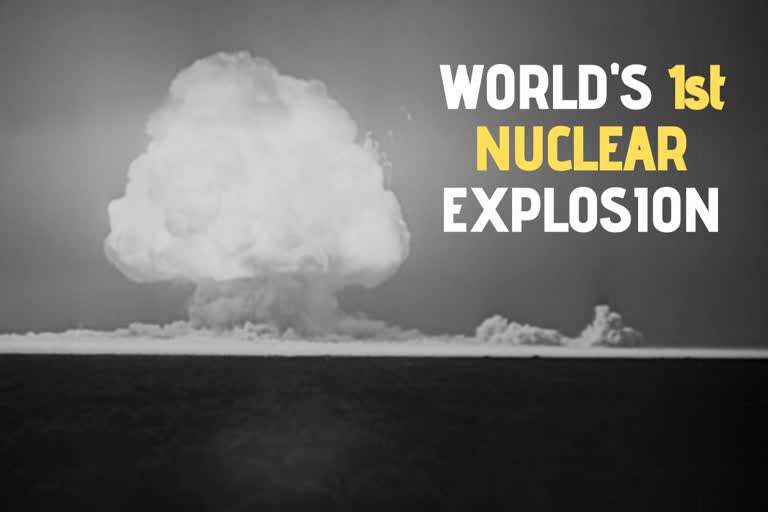Hyderabad: It was on July 16, 1945, that the USA tested a devastating weapon completely unknown to mankind up until then. The world soon realised the destructive power of the weapon, when USA dropped nuclear bombs on Japanese cities Hiroshima and Nagasaki a month later.
The Manhattan Project
US President Roosevelt gave birth to the 'Manhattan Project' in 1939, under which the nation subsequently developed nuclear bombs. It was in 1943, that the Los Alamos Laboratory was constructed to build and test atomic bombs. The lab was known as Project Y.
The scientists worked on two types of atomic bombs: a uranium-based bomb called 'The Little Boy' and a plutonium-based bomb called 'The Fat Man'
The Trinity Test
The head of the Los Alamos lab, J. Robert Oppenheimer is said to have named the test after a verse from John Dones' poem 'The Litany'. He was introduced to the poets's work by his mistress, Jean Tatlock.
On 16 July 1945, the test weapon, nicknamed The Gadget, was supposed to detonate at 4.00 am, but due to thunderstorms, it had to be postponed. In the wee hours of the morning, at 5.30 am, a 40,000-foot high mushroom cloud was seen erupting in the sky and the Trinity test was complete.
Read: 22 years of Pokhran II: 'Country made progress, but we suffered'
The bomb was placed on a 100-foot steel tower which completely disintegrated after the explosion. The US had detonated a plutonium-based bomb that generated a blast equivalent to the detonation of 15,000-20,000 tons of TNT, a commonly used explosive
General Thomas Farrell, the deputy commander of the Manhattan Project, described the explosion as being "Golden, purple, violet, gray, and blue. It lighted every peak, crevasse, and ridge of the nearby mountain range with a clarity and beauty that cannot be described but must be seen to be imagined. It was that beauty the great poets dream about but describe most poorly and inadequately."
Cost of the project
The original budget for the project was $6,000 but all limits on funds were removed after USA decided to join World War II in 1941. The estimated cost of the project is said to be $2 billion.
The Nuclear Age
After the US detonated a nuclear device, other major powers soon joined the elusive club. Though nations like India, Pakistan, and Israel also have nuclear weapons now, only five veto power nations are recognised as nuclear power nations.



